Imagine living in a world where our bodies could heal on their own, successfully treat conditions like Parkinson’s, diabetes, and heart disease, and easily replace damaged tissue. That’s what stem cells are.
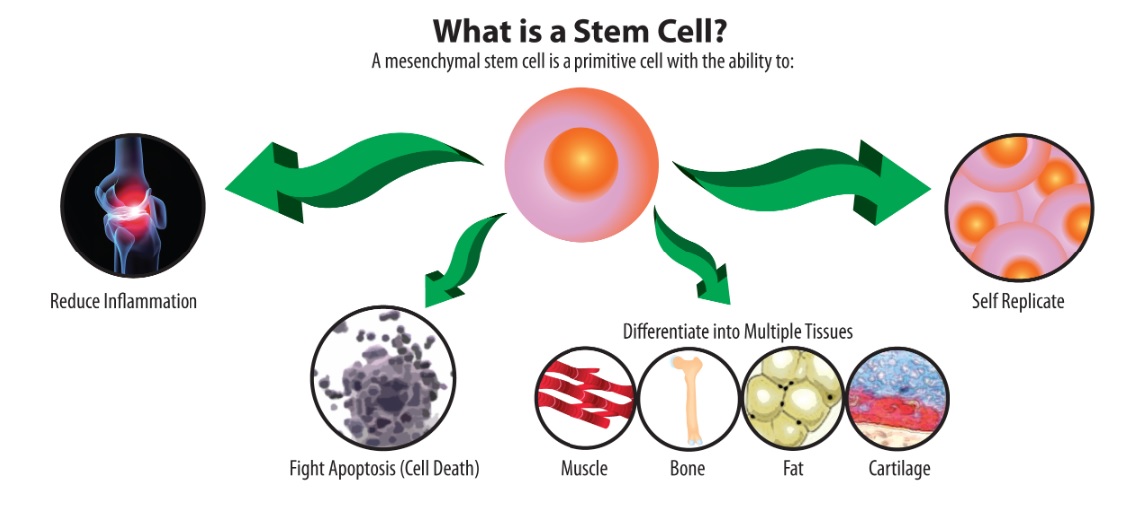
- Stem cells have been of interest and serious research for decades. These extraordinary cells have an extraordinary ability to differentiate into different cell types, making them indispensable in the fields of medicine, regenerative therapy, and scientific research.
- This comprehensive guide explores what stem cells are, how they work, their role in the body, administration techniques, benefits, and the ethical issues associated with their use.
What are Stem Cells and how are they unique?
Stem cells have an amazing ability to regenerate themselves. During early life and development, they can differentiate into a variety of cell types. Many different types of stem cells are being studied by researchers.
Stem cells are of two types-
- pluripotent stem cells (embryonic stem cells and induced pluripotent stem cells)
- nonembryonic or somatic stem cells (sometimes known as “adult” stem cells).
Pluripotent Stem Cells
- At the blastocyst stage, early mammalian embryos contain two types of cells: inner cell mass cells and trophectoderm cells.
- Trophectodermal cells help to form the placenta. The inner cell mass will eventually grow into the organism’s specialized cell kinds, tissues, and organs.
- Previous work with mouse embryos led to the invention of a method in 1998 to extract stem cells from the inner cell mass of preimplantation human embryos and produce human embryonic stem cells (hESCs) in the laboratory.
- Researchers discovered conditions in 2006 that allowed some mature human adult cells to be reprogrammed into an embryonic stem cell-like form. These reprogrammed stem cells are known as induced pluripotent stem cells.
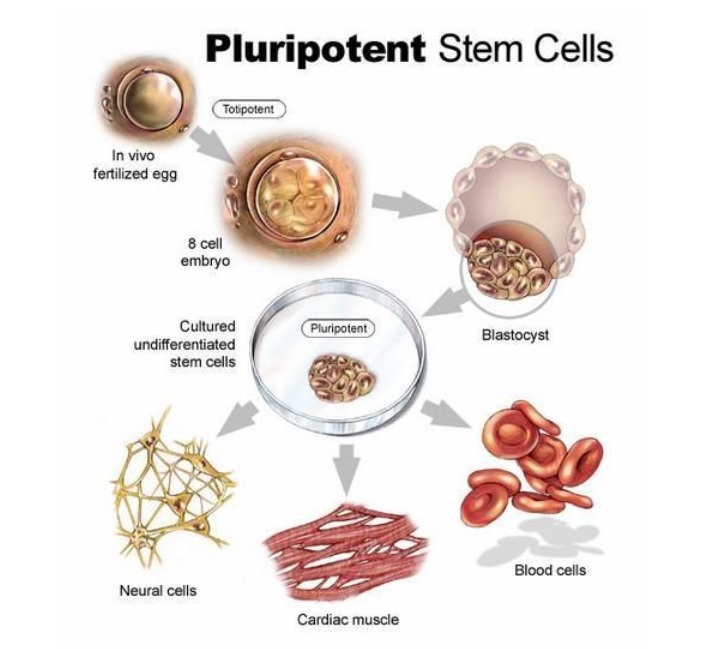
Adult Stem Cells
- Adult stem cell populations act as an internal repair system throughout the organism’s life, generating replacements for cells lost due to natural wear and tear, injury, or illness.
- Adult stem cells have been found in a variety of organs and tissues and have been linked to specific anatomical sites.
- These stem cells can remain dormant (not dividing) for lengthy periods before being awakened by the body’s regular requirement for additional cells to maintain and repair tissues.
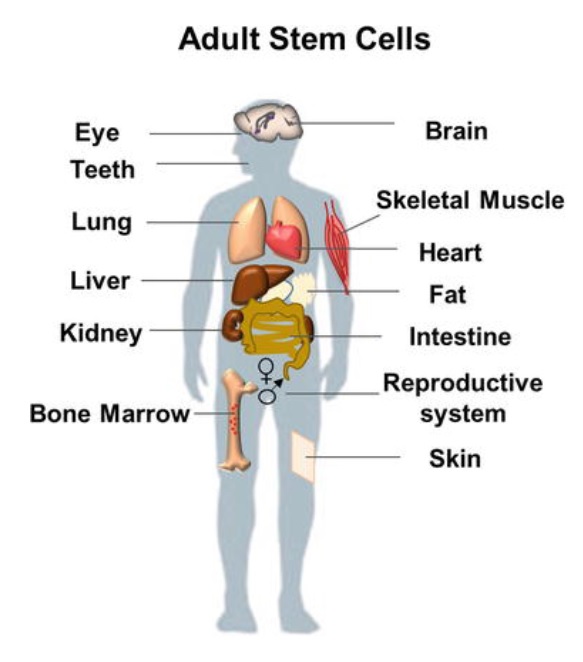
What are the distinguishing characteristics of all stem cells?
- Stem cells have the extraordinary ability to self-renew and form functioning tissues and have the potential to regenerate themselves
In contrast to muscle cells, blood cells, and nerve cells, which do not ordinarily reproduce, stem cells can duplicate several times. When a stem cell splits, the two daughter cells that form may be either:
1) both stem cells
2) a stem cell and a more developed cell, or
3) both well differentiated cells.
It is unknown what governs the balance between different types of divisions to keep stem cells at an adequate amount inside a specific tissue.
- Understanding how cell destiny (stem vs. non-stem) is controlled throughout normal embryonic development may be achievable if the mechanism of self-renewal is discovered.
- This knowledge may also help scientists produce stem cells more effectively in the lab.
- Scientists are very interested in the particular components and situations that allow pluripotent stem cells to stay undifferentiated. Many years of trial and error have been required to understand how to generate and maintain pluripotent stem cells in the laboratory without the cells spontaneously maturing into particular cell types.
Stem Cells can Regenerate Functioning Organs
- Pluripotent stem cells are undifferentiated; they lack tissue-specific features (such as shape or gene expression pattern) that allow them to execute specialized roles.
- Nonetheless, they are capable of producing all differentiated cells in the body, including heart muscle cells, blood cells, and nerve cells.
- Adult stem cells, on the other hand, develop to produce the specialized cell types of the tissue or organ in which they dwell and may have tissue-specific morphological traits and gene expression patterns.
- The number of distinct cell types that stem cells may generate varies depending on their potency. The cell normally goes through numerous phases of differentiation, becoming increasingly specialized with each step.
- Scientists are learning about the signals that initiate each stage of the differentiation process. Factors released by other cells, physical contact with neighboring cells, and specific chemicals in the microenvironment all serve as signals for cell differentiation.
How are stem cells generated in the laboratory?
- Cell culture is a process by which stem cells are grown in a laboratory. Stem cells can multiply in laboratory surroundings in a culture plate with a nutrient broth known as culture media (which is optimized for growing different kinds of stem cells).
- Most stem cells adhere, divide, and disseminate throughout the dish’s surface.
- The culture dish becomes congested as the cells proliferate, therefore they must be re-plated throughout the subculturing phase, which is performed many times over many months.
- Each cycle of subculturing is known as passaging. The original cells can produce millions of stem cells. Batches of cells can be frozen and sent to different locations at any point throughout the procedure.
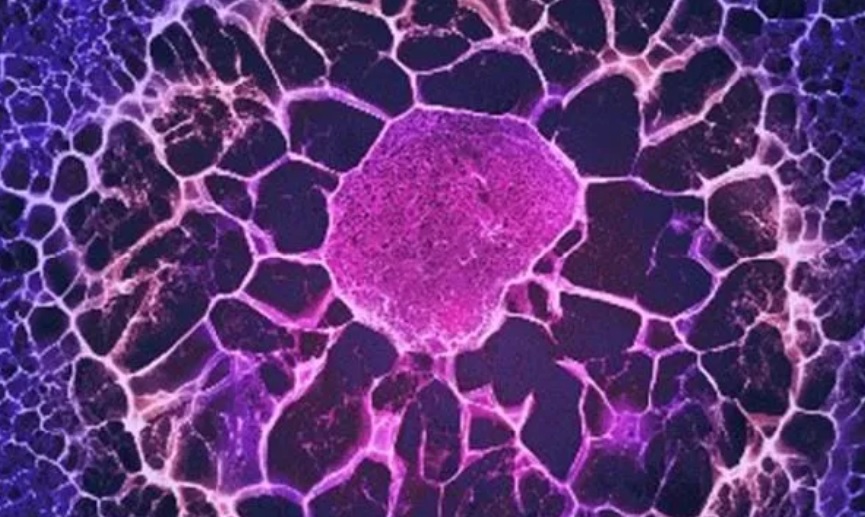
How do you “reprogram” normal cells to generate iPSCs?
- Differentiated cells, such as skin cells, can be reprogrammed back into pluripotent condition.
- Reprogramming is accomplished over several weeks by forcing the expression of genes known to be master regulators of pluripotency. After this process, these master regulators will have remodeled the expression of a whole network of genes.
- The characteristics of differentiated cells will be replaced with those associated with the pluripotent state, thus reversing the developmental process.
How can stem cells become differentiated?
- Pluripotent stem cells can stay undifferentiated in culture as long as they are cultivated under proper circumstances.
- Scientists may adjust the chemical content of the culture media, alter the surface of the culture plate, or edit the cells by driving the expression of certain genes to establish cultures of specific types of differentiated cells. Scientists have created certain fundamental techniques, or “recipes,” for the differentiation of pluripotent stem cells into particular cell types after years of testing.
What laboratory tests are performed to detect stem cells?
Scientists evaluate the cells at various stages of the process to check if they display the essential features that distinguish stem cells. These tests may include:
- Verifying the expression of numerous genes known to be critical for stem cell activity.
- Limiting the pace of proliferation.
- Examining the chromosomes of chosen cells to ensure genomic integrity.
- Demonstrating the differentiation potential of the cells by removing signals that keep the cells undifferentiated, causing pluripotent stem cells to spontaneously differentiate
- By adding signals that induce adult stem cells to differentiate into appropriate cell phenotypes.
What is the role of stem cells in biomedical research and therapy?
Human stem cells are employed in biomedical research and therapy development in a variety of methods due to their unique regenerative properties.
Cell biology and therapy
- Stem cells can be used by scientists to learn about human biology and produce treatments.
- A deeper knowledge of the genetic and molecular signals that control cell proliferation, specialization, and differentiation in stem cells might provide insight into how illnesses develop and offer novel therapeutic approaches.
- Scientists can employ iPSCs derived from a patient to generate “organoids” (small replicas of organs) or tissue chips for researching sick cells and testing medications with personalized outcomes.
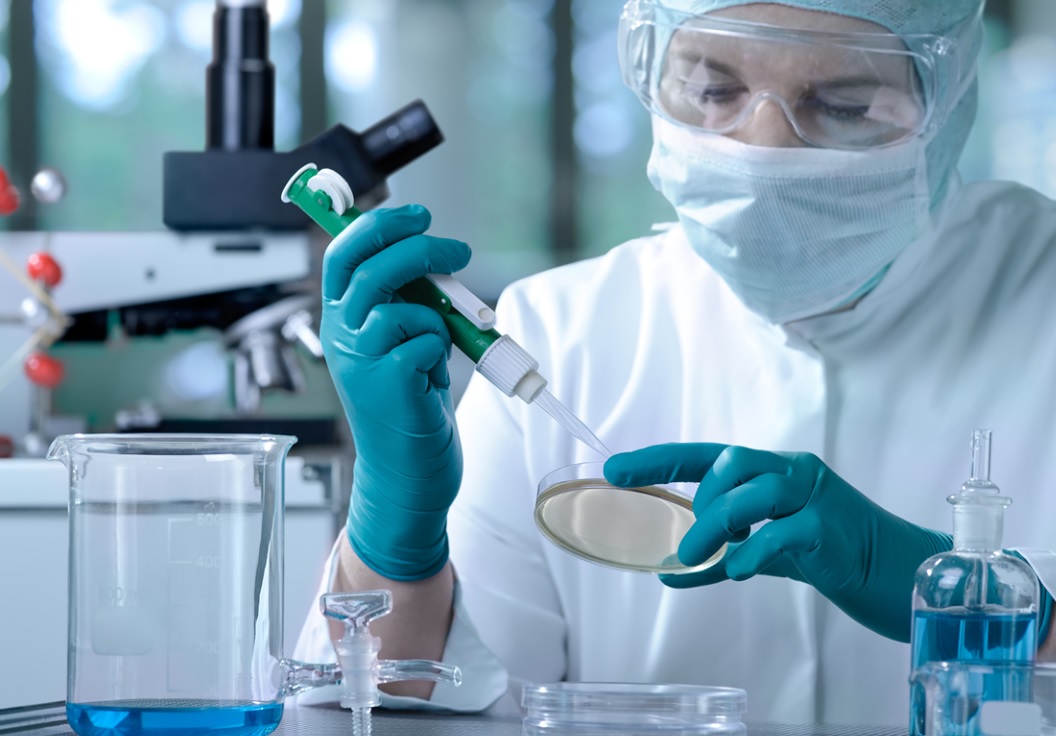
Cellular Biology
- The production of cells and tissues for cell-based therapeutics, commonly known as tissue engineering, is a significant prospective application.
- The present demand for transplantable tissues and organs significantly outnumbers the supply.
- Stem cells have the potential to be a renewable source of energy. Adult stem cells are normally found in relatively tiny numbers in each tissue, and once removed from the body, their ability to proliferate is restricted, making large amounts of adult stem cells for treatments difficult to generate.
- Pluripotent stem cells, on the other hand, are less constrained in terms of starting material and renewal capacity.
- Scientists must be able to modify stem cells so that they have the requisite qualities for effective differentiation, transplantation, and engraftment to realize the promise of stem cell therapy in illnesses.
To be helpful for transplantation, stem cells must be generated in a reproducible manner to:
- Proliferate rapidly and create enough cells to replace lost or damaged tissues.
- Differentiate into the specified cell type(s).
- Survive in the recipient following transplant.
- After the transplant, integrate with neighboring tissue.
- Avoid rejection by the recipient’s immune system.
- Function properly for the length of the recipient’s life.
How It Works:
- Stem cell collection: Depending on the type of stem cell therapy, stem cells are available from a variety of sources. These sources include bone marrow, adipose tissue, cord blood, and even laboratory-cultured stem cells (induced pluripotent stem cells, or iPSCs).
- Stem Cell Processing and Isolation: After collection, stem cells are processed and isolated for therapeutic use. This procedure ensures that the stem cells are in perfect condition and free of impurities.
- Uses: The obtained stem cells are administered to the patient. Depending on the condition being treated, this can be done in different ways. Other techniques include direct injection into the affected area, intravenous (IV) infusion, and implantation.
- Healing and Regeneration: Once in the body, stem cells have the amazing ability to transform into the exact cell type needed for healing. For example, stem cells may differentiate into cardiomyocytes if the treatment is aimed at healing damaged heart tissue.
- Monitoring and follow-up: Patients are monitored to determine treatment efficacy and ensure safety. Multiple sessions or follow-up visits may be required depending on the condition being treated.
How are Stem Cells used?
Stem Cells can be used for intravenous stem cell therapy (intravenously), intrathecally (directly into the spinal canal), and into problem areas (knees, hips, wrists, etc.). It can be administered in a variety of ways, including stem cell injections. Stem cell research shows that the route of administration can have different effects on patients and should be carefully considered before choosing the route of administration.
What is Stem Cell Transplantation?
Stem Cell Transplantation is the process of giving a patient healthy stem cells to replace damaged stem cells. Stem cells can be autologous (obtained from the patient’s own body) or allogeneic (obtained from a donor). To prepare the body for the transplant, the patient receives high doses of chemotherapy and possibly radiation therapy before the transplant. The bone marrow stem cells are then removed and replaced. Autologous stem cell transplantation has several advantages over allogeneic stem cell transplantation, including protection against underlying hematologic malignancies.
What conditions are stem cell transplants used for?
Stem cell transplants are used to treat people with terminal cancer and blood disorders caused by abnormal blood cells. They can also be used to treat diseases such as multiple myeloma and some leukemias. Stem cell transplantation works directly against cancer through a phenomenon known as graft versus tumor. Thousands of cancer patients have been cured with hematopoietic stem cells, but this treatment carries significant risks.
Stem cell therapy has the amazing potential to revolutionize medicine and is attracting the attention of both medical professionals and patients around the world. But with innovation comes responsibility, and the legal issues surrounding stem cell therapy are complex and ever-changing.
Are stem cells regulated in the US?
In the early 1970s, the US government began to tightly control the use of human embryos for research purposes. It was considered unethical because stem cells were thought to be derived from fertilized embryos. Since then, medical discoveries have led doctors to look for sources of stem cells other than human embryos. Stem cells are currently available from a patient’s adipose tissue (adipose tissue) or donated bone marrow.
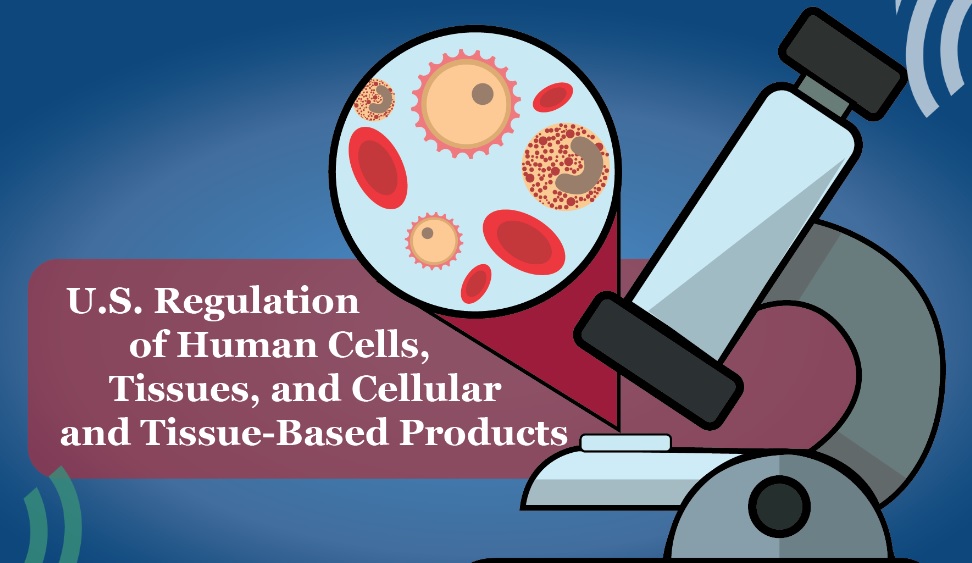
Despite more ethical stem cell procurement, its expanded use is not permitted in the United States. Some treatments are available in the United States, but they are severely restricted, approved only for very specific uses, and have minimal effective doses. Additionally, recent FDA reports indicate intent to further restrict patient access to medicines in the United States, which does not bode well for the future. This is despite hundreds of studies proving the positive effects of stem cell therapy, with little to no negative reactions.
Guidelines for the use of Stem Cells
For the United States, the International Society for Stem Cell Research (ISSCR) has established the following specific guidelines.
- When researching stem cells, researchers must adhere to the following rules. The laws and moral standards of your country and the world. They must be approved by regulatory authorities to ensure that they perform their duties ethically and responsibly.
- Researchers must be transparent about their research methods. We must be transparent to everyone about our research methods, results, and any personal interests that may influence them. Transparency increases public trust in stem cell research.
- Patients must obtain consent before a doctor can use stem cells for therapy. Patients need to be informed of both potential benefits and risks so that they can make informed decisions.
- Stem cell research should always be conducted fairly and honestly.
- Researchers must be professional and always tell the truth about their discoveries.
Frequently Asked Questions (FAQs):
What are stem cells, and why are they so popular?
Stem cells help to regenerate cells in existing healthy tissues and may aid in the repair of tissues in wounded or damaged areas. Stem cells differ from other cells in several ways: they can self-renew; they can divide for an extended period; and, under certain conditions, they can be induced to differentiate into specialized cells such as cardiac cells, liver cells, fat cells, bone cells, cartilage cells, nerve cells, and connective tissue cells.
What is the distinction between embryonic stem cells and adult stem cells?
Adult stem cells are stem cells that survive throughout life and contribute to the maintenance and repair of certain organs. Adult stem cells have limited developmental potential in that their capacity for proliferation is limited and they can give rise to only a few cell types, and they have not been found in every organ. Embryonic stem cells, on the other hand, can divide nearly endlessly and give rise to every cell type in the body, suggesting that they may be the most adaptable source of cells for study and transplantation therapy.
How do stem cells form?
There are a variety of stem cell sources employed in research. The inner cell mass of a blastocyst is used to obtain embryonic stem cells. The blastocyst is generated when a fertilized egg, or zygote, divides and divides again, becoming two cells, then four cells, and so on until it forms a hollow ball of roughly 150 cells. The blastocyst, or ball of cells, has two types of cells: the trophoblast and the inner cell mass. The pluripotent stem cells that can be extracted and cultured are found in the inner cell mass. Stem cells can also be present in the body’s developed tissues and organs.
Why are scientists interested in using stem cells?
Stem cell experts believe that in the future, stem cell therapy will be used to treat a wide range of diseases and catastrophic injuries. Donated organs and tissues are being used to replace missing or damaged tissue in a variety of illnesses.
Because of stem cells’ remarkable regenerative capacity, there has been a surge in research involving studies targeted at replacing tissues to treat Parkinson’s and Alzheimer’s illnesses, osteoarthritis, rheumatoid arthritis, spinal cord injury, stroke, burns, heart disease, and diabetes. While some success has been obtained with laboratory animals, just a few human tests have been done.









